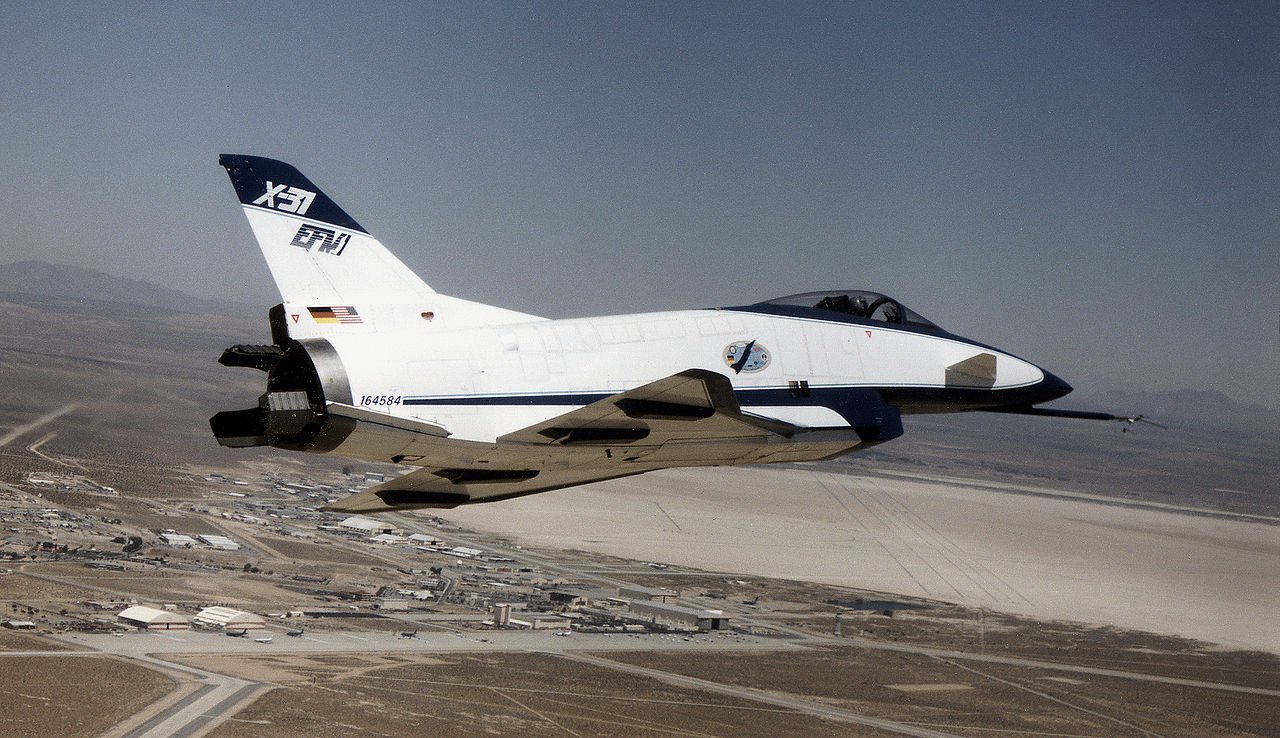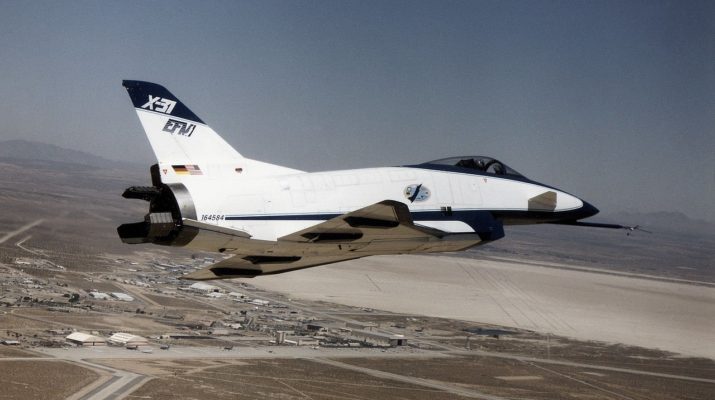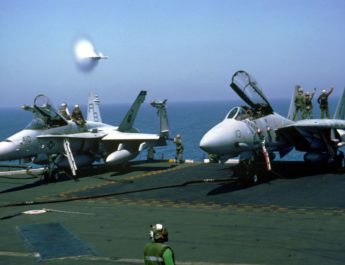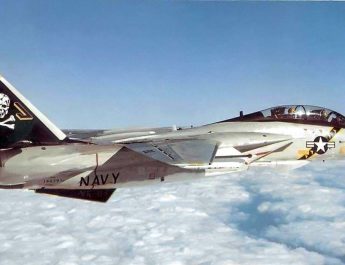The X-31 research effort began in the late 1980s as an international program involving DARPA, the U.S. Navy, Deutsche Aerospace, the German Federal Ministry of Defense and Rockwell International.
The program’s goal was to explore the tactical utility of a thrust-vectored aircraft with advanced flight control systems, using an aircraft designed and built specifically for that task.
The X-31 was a real pioneering program. In fact, the X-31 program pretty much wrote the book on thrust-vectoring, along with its sister program, the F-18 HARV. The initial X-31 flight tests were conducted at Rockwell’s facility in Palmdale, California.
But, in 1992, NASA and the U.S. Air Force joined the X-31 research team and the test flight program was moved to the Dryden Flight Research Center on Edwards Air Force Base. And before too long, the X-31 was turning in some extremely impressive results.

By any measure, the X-31 was a highly successful flight research program at NASA’s Dryden Flight Research Center, now the Armstrong Flight Research Center. It regularly flew several flights a day, accumulating over 550 flights during the course of the program, with a superlative safety record. And yet, on Jan. 19, 1995, on the very last scheduled flight of the X-31 ship No. 1, disaster struck.
But while the flight was routine, there had been some changes to the configuration of the X-31 since its initial flights. In particular, the original pitot tube, which supplies airspeed information to the plane’s flight control computers, had been replaced with another kind of pitot tube known as a “Kiel probe.”
The Kiel probe gave more accurate airspeed data at high angles of attack, but it was more vulnerable to icing, especially since the Kiel probe on the X-31 did not have any pitot heat.
January 19th, 1995 was not a normal day. The unusual part of the day was we had a high humidity at altitude actually conducive for freezing conditions and the airplane was operated for, in and out of some fairly high moisture content for extended periods of time, lead to some indications in the cockpit and the control room that was causing problems with the air data system.
Each mishap has it’s own set of circumstances and it’s own sequence of events. But those who study mishaps find similar issues: communications, complacency, unwarranted assumptions, human frailties… just like a chain. You make a chain — a chain of events — when you have any of these accidents. Any link of the chain, if broken, would prevent an accident.
The X-31 flight test team was the “A” team — the best people, from every discipline — from every organization. But they lost an airplane. If it can happen to the best team, it can happen to any team.



